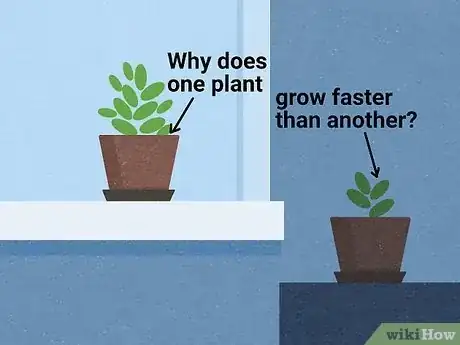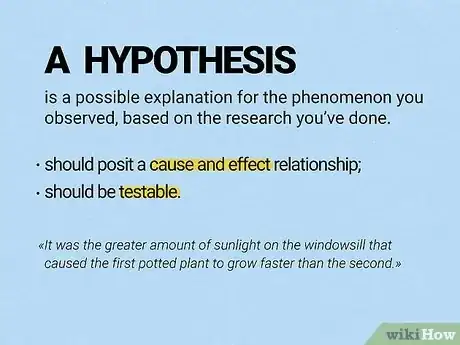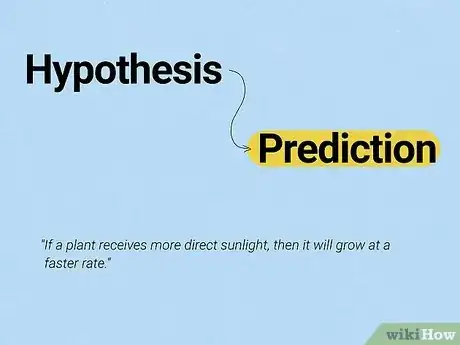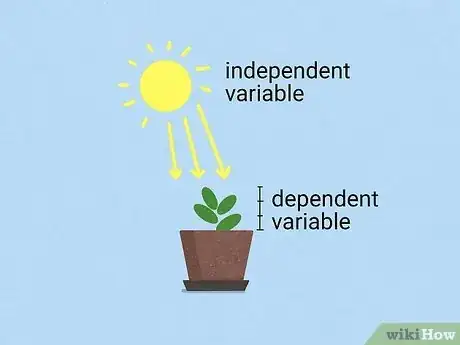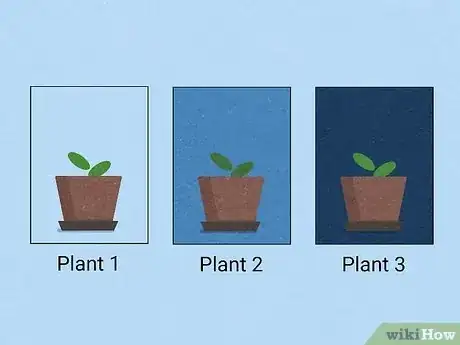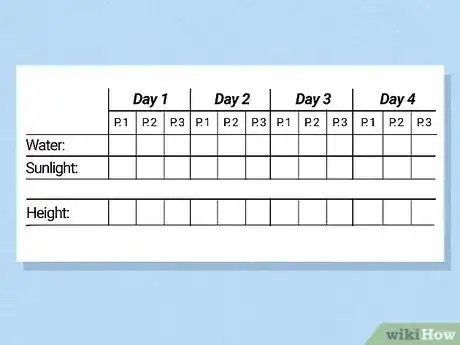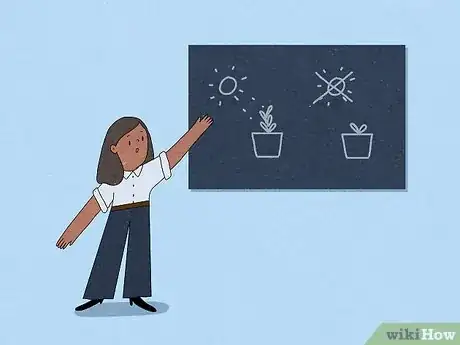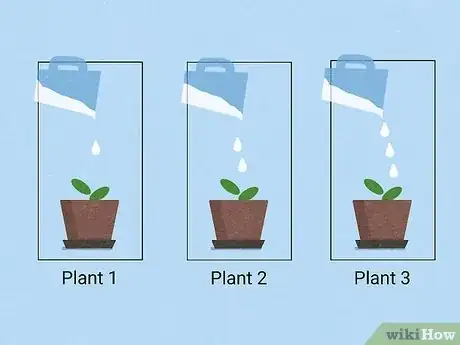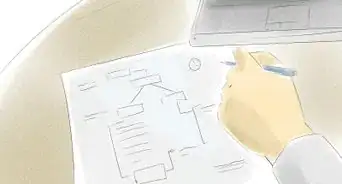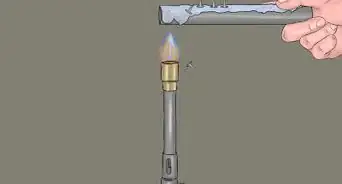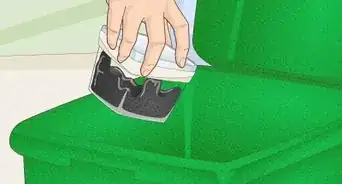This article was co-authored by Bess Ruff, MA. Bess Ruff is a Geography PhD student at Florida State University. She received her MA in Environmental Science and Management from the University of California, Santa Barbara in 2016. She has conducted survey work for marine spatial planning projects in the Caribbean and provided research support as a graduate fellow for the Sustainable Fisheries Group.
This article has been viewed 412,001 times.
The scientific method is the backbone of all rigorous scientific inquiry. A set of techniques and principles designed to advance scientific research and further the accumulation of knowledge, the scientific method has been gradually developed and honed by everyone from the philosophers of ancient Greece to the scientists of today. While there are some variations on the method and disagreement over how it should be used, the basic steps are easy to understand and invaluable not only to scientific research but also to solving everyday problems.
Steps
Coming up with a Hypothesis
-
1Ask a question about something you observe. It is curiosity that breeds new knowledge. Note when you observe something that you can’t readily explain with your existing knowledge, or something that may have another explanation than the one commonly given. Then, question how to explain what causes it to occur.[1]
- For example, you may notice that the potted plant you place on the windowsill is taller than the plant you keep in your bedroom, even though they’re the same type of plant and you planted them at the same time. You may then ask why it is that the two plants have different growth rates.
-
2Do background research on existing knowledge about the question. In order to answer your question, you’ll need to know more about the subject matter at hand. Start by reading books and looking up articles online about your question to try and find the answer.[2]
- For example, if you’re looking for information to answer your question about plants, you might start by looking up information on plant biology and photosynthesis from a science textbook or online. You may also find that gardening books and websites useful.
- You want to read as much about your question as possible, because the question may have already been answered, or you may find information that will help you form your hypothesis.
Advertisement -
3Propose a hypothesis in the form of an explanation. A hypothesis is a possible explanation for the phenomenon you observed, based on the research you’ve done on the subject. It’s basically an educated guess. Your hypothesis should posit a cause and effect relationship.[3]
- Your hypothesis should sound like a statement of fact. For example, your hypothesis might be that it was the greater amount of sunlight on the windowsill that caused your first potted plant to grow faster than the second.
- Make sure that your hypothesis is testable. In other words, it needs to be something you can prove in a scientific experiment.
-
4Make a prediction based on your hypothesis. You should predict an outcome you’d expect to see if your hypothesis is correct. This is the outcome you’ll seek to confirm in your experiment.[4]
- Your prediction should be in the form of an if-then statement. For example, you might say, “If a plant receives more direct sunlight, then it will grow at a faster rate.”
Conducting Your Experiment
-
1List the procedure for testing your hypothesis. List step by step exactly what you will do to test your hypothesis. This step is not only important for making sure you’re correctly testing your hypothesis, but will also allow yourself and others to repeat your experiment.[5]
- For example, you should list precisely how much soil you put in each pot, how much water you give each plant and how often, and how much sunlight each plant receives (measured in watts per square meter).
- Reproducibility is one of the key underpinnings of the scientific method, so it’s important that you lay out exactly how your experiment is conducted to ensure that others can copy it and try to get the same results.
-
2Identify your independent and dependent variables. Your experiment should test the effect of one thing (your independent variable) on another thing (your dependent variable). Identify what your independent and dependent variables and determine how you’ll measure them in your experiment.[6]
- For example, in the potted plant experiment, the independent variable would be the amount of sunlight each plant is exposed to. Your dependent variable would be the height of each plant.
-
3Design your experiment so that it isolates the cause of the phenomenon. Your experiment needs to either confirm or fail to confirm your hypothesis, so it needs to be carried out in such a way that the cause of the phenomenon can be isolated and identified. In other words, it should be “controlled.”[7]
- For example, you can design an experiment in which you place 3 different potted plants (of the same species) in 3 different locations: 1 on the windowsill, 1 in the same room but in an area with less direct sunlight, and 1 in a darkened closet. You would then record how tall each plant grows at the end of each week for a 6-week period.
- Be sure you're only testing a single phenomenon at a time. All other variables should be constant across your samples. For example, all 3 of your plants should be in the same size pots with the same type and amount of soil. They should also get the same amount of water at the same time each day.
- For some complex questions, there may be hundreds or thousands of potential causes and it can be difficult or impossible to isolate them in any single experiment.
-
4Maintain impeccable records. Other people must be able to set up a test in the same way that you did and get the same result. Make sure you keep very thorough records that document the experiment, the procedure you follow, and the data you collect.
- It’s very important that you make it possible for other scientists to precisely copy everything you did when they repeat your experiment. This allows them to rule out that your results came from any discrepancies or mistakes.[8]
-
5Run your experiment and gather quantified results. Once you’ve designed your experiment, you’ll need to carry it out. Make sure your results are gathered in quantified metrics that allow you to analyze them and allow others to try to repeat your experiment objectively.
- In the potted plant example, place each plant in the areas with differing amounts of sunlight that you selected. If the plants have already grown above the soil line, record their initial height. Water each plant with the exact same amount of water on a daily basis. At the end of each 7-day period, record each plant’s height.
- You should run your experiment several times to make sure that your own results are consistent and to weed out any anomalies. There’s no set number of times you need to repeat an experiment, but you should aim to repeat it at least twice.[9]
Analyzing and Reporting Your Results
-
1Examine the data you’ve collected and draw conclusions from it. Hypothesis testing is simply a way to collect data that will help you either confirm or fail to confirm your hypothesis. Analyze your results to determine how the independent variable affected the dependent variable and see whether your hypothesis was confirmed.[10]
- You can analyze your data by looking for certain patterns or proportional relationships within your results. For example, if you notice that the plants with more sunlight grew more quickly than the plant left in the dark, than you can deduce that the amount of sunlight had a directly proportional relationship to the growth rate.
- Whether the data confirms or fails to confirm the hypothesis, you must always be on the lookout for other things, so-called "confounding" or "exogenous" variables, that may have influenced the results. If this is the case, you may need to redesign and repeat your experiment.
- In more complicated tests, you may not be able to figure out whether your hypothesis is confirmed without first spending considerable time looking at the data you gathered in your hypothesis testing.
- You may also find that your test is inconclusive if it fails to either confirm or fail to confirm your hypothesis.
-
2Report your findings, if applicable. Scientists generally report the results of their research in scientific journals or in papers at conferences. They report not only the results but also their methodology and any problems or questions that arose during their hypothesis testing. Reporting your findings enables others to build upon them.[11]
- For example, you might consider publishing your findings in a scientific journal like Nature or at an academic conference hosted by a local university.
- The format in which you communicate your findings will largely be determined by the venue. For example, if you’re presenting your findings at a science fair, you may find that a simple poster board will suffice.
-
3Conduct further research as necessary. If the data failed to confirm your initial hypothesis, it's time to come up with a new hypothesis and test it. Luckily, your first experiment may have provided you with valuable information to help you form a new hypothesis. Start from the beginning to continue to try and find an answer to your question.[12]
- For example, if your potted plant experiment showed no significant relationship between the amount of sunlight received and the growth rates of your three plants, you should consider what other variables might explain the difference in plant height you witnessed before. These could be the amount of water you use for each plant, the type of soil used, etc.
- Even if your hypothesis is confirmed after 1 experiment, further research will be necessary to ensure that the results are reproducible and not just a one-time coincidence.
Community Q&A
-
QuestionWhat is the definition of further research?
 Community AnswerIt means getting more evidence to support your hypothesis, and further experimentation to be sure you were correct, or to correct any mistakes.
Community AnswerIt means getting more evidence to support your hypothesis, and further experimentation to be sure you were correct, or to correct any mistakes. -
QuestionI found out that the orchids in my garden are dying. How can I apply the steps in the scientific method to solve the problem?
 Community AnswerThe scientific method is usually used to conduct experiments, and not to necessarily solve problems. You could use the scientific method to develop an experiment to determine why the orchids are dying, or you could just contact a professional directly.
Community AnswerThe scientific method is usually used to conduct experiments, and not to necessarily solve problems. You could use the scientific method to develop an experiment to determine why the orchids are dying, or you could just contact a professional directly. -
QuestionCan you explain the concept of scientific method and how science is used to generate new knowledge?
 Samuel C. KingCommunity AnswerThe scientific method is an empirical method used to acquire knowledge about the physical world. In simpler terms, it's the way that scientists conduct experiments on physical things to learn new things about them and the world. It's through this method, which produces empirical and reproducible results, that scientists generate new knowledge.
Samuel C. KingCommunity AnswerThe scientific method is an empirical method used to acquire knowledge about the physical world. In simpler terms, it's the way that scientists conduct experiments on physical things to learn new things about them and the world. It's through this method, which produces empirical and reproducible results, that scientists generate new knowledge.
Warnings
- Beware exogenous variables. Even in the simplest experiments, environmental factors can creep in and influence your results.⧼thumbs_response⧽
- Always let the data speak for itself. Scientists must always be careful that their biases, mistakes, and egos do not lead to misleading results. Always report your experiments truthfully and in detail.⧼thumbs_response⧽
References
- ↑ https://www.livescience.com/20896-science-scientific-method.html
- ↑ https://www.sciencebuddies.org/science-fair-projects/science-fair/steps-of-the-scientific-method
- ↑ https://www.khanacademy.org/science/high-school-biology/hs-biology-foundations/hs-biology-and-the-scientific-method/a/the-science-of-biology
- ↑ https://www.khanacademy.org/science/high-school-biology/hs-biology-foundations/hs-biology-and-the-scientific-method/a/the-science-of-biology
- ↑ https://www.livescience.com/20896-science-scientific-method.html
- ↑ https://www.livescience.com/20896-science-scientific-method.html
- ↑ https://www.khanacademy.org/science/high-school-biology/hs-biology-foundations/hs-biology-and-the-scientific-method/a/the-science-of-biology
- ↑ https://www.livescience.com/20896-science-scientific-method.html
- ↑ https://www.sciencebuddies.org/science-fair-projects/science-fair/steps-of-the-scientific-method
